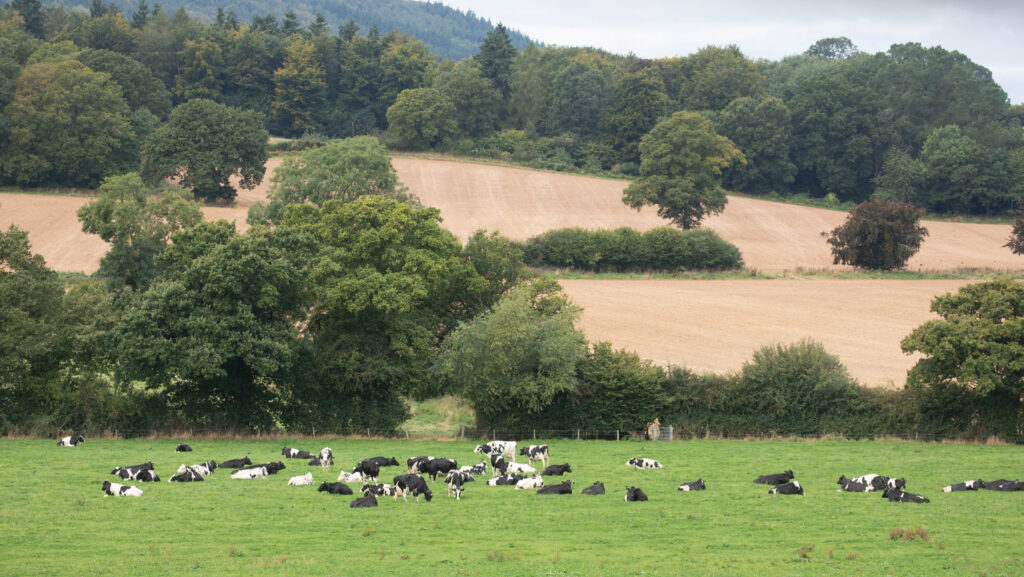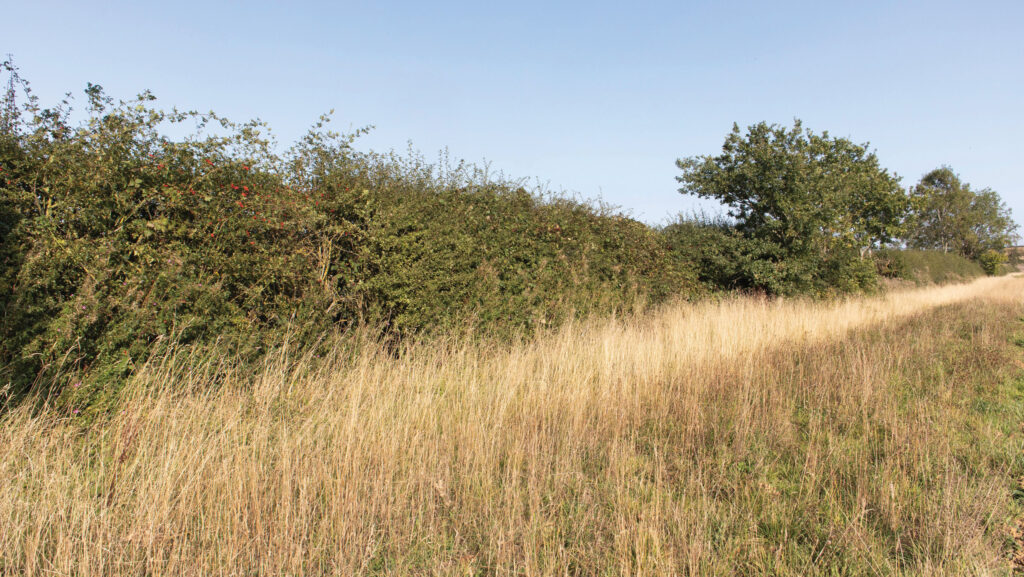Tips to make the most of existing trees and hedges on farm
 © Tim Scrivener
© Tim Scrivener Managing a farm’s existing trees and hedges is a cost-effective way to add natural resilience to a livestock business without needing a big investment in new saplings or whips.
Enhancing what already grows well on the site can help adapt to changing – and challenging – weather patterns and environmental targets.
See also: What benefits do trees offer to livestock systems?
The starting point is to assess what is already growing where, and how.
And the two best opportunities in the year for a farm walk to observe species are spring (when everything is in full leaf) and winter (when branches are bare), says Helen Chesshire, lead advocate for Farming and Agroforestry at the Woodland Trust.
She suggests recording tree and hedge species, numbers and their condition (what is flourishing, what is diseased), before identifying any gaps.
But instead of engaging a tree surgeon or investigating grants towards new stock, Helen says it is important to first get professional advice.
An environment adviser (from organisations such as the Farming and Wildlife Advisory Group or the Woodland Trust) can help with planning how trees and hedges fit into a whole-farm approach to managing weather extremes, soil and habitat protection, and carbon sequestration.

© Tim Scrivener
Take stock
“Look at what you have got and work with it before adding anything new,” she says. “And [for inspiration] visit a farm that has gone from flailing its hedges and is doing more with its trees.
“It might just mean changing management for a hedge – for instance, working out whether the state of a gappy hedge is because of flailing, or whether it has been allowed to grow upwards.
“The aim is to put resilience in through a natural process: you don’t need to plant a whole forest all at once.
“Think about the issues and challenges facing the farm. Where are yields poorest, are there particularly wet areas? Where do livestock go in extreme weather such as heat? Where do they look for shade and walk on tracks?
“Pick a hot, dry period, then a wet, windy, cold one to look at how trees and hedges are used on your farm.”
Some fields may be exposed to full sun, wind or rain, and therefore soils will need protection from moisture loss, or help with drainage, she adds.
“Trees deliver a range of benefits, from shade and shelter to browsing for livestock; they stop run-off, improve wet areas and capture carbon. There are possible secondary benefits from harvesting fruit, nuts, fuel or timber.”

© Tim Scrivener
Local species
Although the mantra is to “plant the right tree in the right place, for the right reason”, Helen points out that there is no “perfect species”.
Planting British-grown trees reduces the risk of disease, and selecting the correct species will also avoid invasive types.
“Species need to be local, and we recommend native broad-leaf species for natural resilience. But it is critical to have a diversity for disease resilience and select what grows well in your area.”
Getting help with a management and planting scheme will ensure all factors are considered, from archaeology to power lines, and existing habitats to land drains.
It is also important to consider what suits the farm’s landscape, and how a scheme might help in slowing winds, increasing soil moisture retention and promoting early spring grass growth.
“We’re not suggesting rows of trees in fields, just round the edges,” she adds. “Hedges also create wildlife connectivity habitats on a barren landscape.”
Helen says old farm maps are a good starting point, as new planting can replicate or improve historical hedgerows and copses.
However, while it is sensible to replace old hedge lines, which were put there for a reason, anything new needs to adapt to modern grassland management (rotational or mob grazing), herbal leys, or large field machinery – and even future building plans.
Consider tree protection
Getting specialist help will also ensure that non-toxic, palatable species are selected, with appropriate management such as how to manage oaks in a mast year.
In the same way, suitable species can be suggested for salty coastal or very windy areas.
Another area to consider is the natural tree predators on the farm: deer, rabbits, squirrels.
“Have a good understanding of the type of protection needed [whether that is] electric fencing or cactus guards to protect trees as they establish.
“You can also use natural thorns growing around the tree,” says Helen, adding that changing grazing rotations and ensuring stock fill up on grass reduces the opportunity for browsing on saplings.
The permanency and slow-growing characteristics of trees can be a big barrier to planting for many farmers, she concedes.
They are often seen as something for future generations to benefit from. Although it takes five years of “careful nurturing to establish a tree”, she stresses that its effects are felt within two to three years.
“Future generations will see the timber, but you can get value from shade and shelter pretty quickly – although it is important to treat trees and hedges as another crop.”
